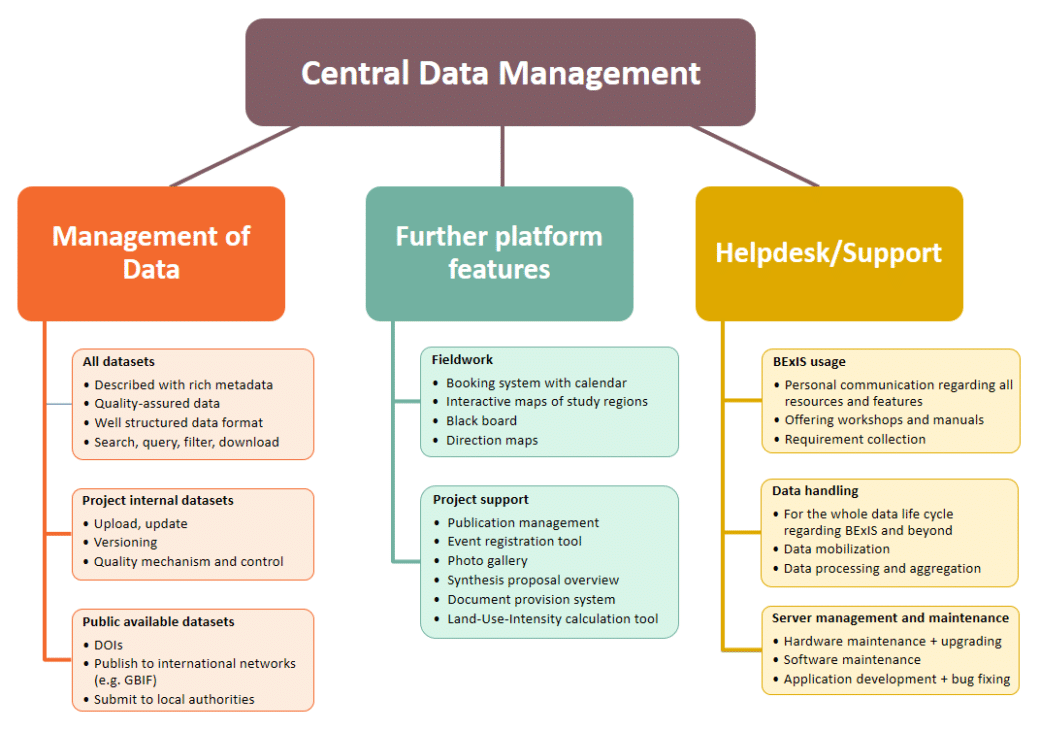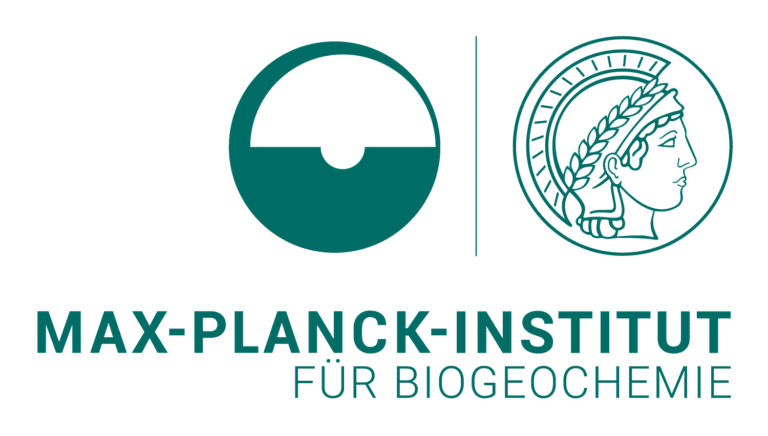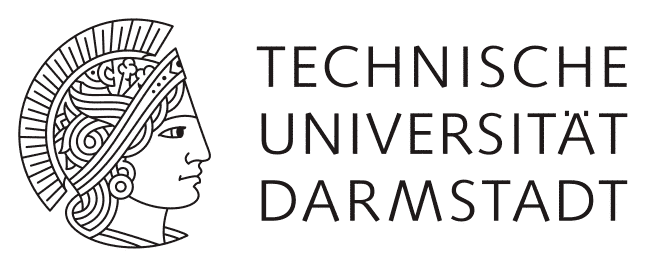Central data management
Core project 4 – The so-called core projects of the Biodiversity Exploratories (BE) emerged from the on-site project selection and the establishment of the exploratories (2006-2008) and have been providing the infrastructure since 2008.
A large amount of data is collected each year in the subprojects of the Biodiversity Exploratories (BE), reflecting the broad spectrum of scientific questions. It is essential to store these data centrally to ensure easy, fair and reproducible data sharing between the researchers.
It is also crucial that these data are not lost and are available for future generations of researchers within the BE and as well as external projects. Long-time series are for many questions in biodiversity research of great interest.
To ensure this, the data management project, as one of the central infrastructure projects, has accompanied the BE from the beginning. It is located at the Friedrich Schiller University in Jena, Germany.
It is the first contact point for all aspects of research data management for all BE participants, other researchers, and the interested public.
We achieve the main goals described above regarding the storage and exchange of the research data with a web application called BExIS. Below you will find sections with additional information on this.
We support researchers in using BExIS and in all data management issues. We offer help in uploading data into BExIS and ensure high data quality (data curation). Last but not least, we advise and support researchers in publishing their data.
In addition to the research data support, we promote the exchange of important documents and publications in the overall project and offer software tools for querying basic data, such as climate data. Furthermore, we support the researchers by providing important information and tools for planning and conducting fieldwork in BExIS. These aspects are shown in the following figure and explained in more detail in the ‘Functionalities of BExIS section’.
BExIS is the abbreviation of our information system name ‘Biodiversity Exploratories Information System’. Initially, the software was developed and continuously extended in the BE project since 2007 (BExIS, 1st generation). Other research projects also showed interest in such an application. But it was not easy to set up BExIS for other projects, as it was developed for the demands of the BE. Hence, a DFG project was initiated in 2012 with the participation of our team. The goal was to develop a modular data management system for ecological data that can be easily adapted to the needs of different projects.
The new software was named BEXIS2 and is a freely available, server-based research data management application. It is designed to support the entire data life cycle and is highly configurable. Among other things, it supports the use of different metadata schemas, access to different versions of the data, predefinition of variables, rights assignment with an integrated release request and release management for datasets, search configuration, and DOI assignment.
In February 2021, the BE project started to use the BEXIS2 software. However, the name ‘BExIS’ continues to stand for the BE’s information system. Since the BExIS2 software is modular, we extended it with our BE-specific functionalities (see section ‘Functionalities of BExIS’) and made them available to other projects using BEXIS2.
If you are interested in the development of the platform, you can get an overview on the GitHub pages:
For the current phase, various work packages have been proposed to guarantee the day-to-day operation of the research database and data management in general. The secure storage of data in a sustainable data management system requires the management of the research data and the support of the users, maintenance of the technology and software, and the further development of BEXIS2 and BE specific features.
Aspects of data mobilization and publication are also part of these work packages. Our work includes an active curation of the data together with the scientists to achieve a high quality of the metadata and the data and to be able to offer them FAIR to the public, also with a DOI.
In order to be able to continuously offer high data quality and to support the FAIR principles, we will continue to work on the software. We will implement functions that promote a high data quality and, in particular, support the work of a data curator.
A particular focus in this phase will be on enabling persistent identifier (PID) use and enriching and linking various internal resources with it. This information should be made available externally and linked to corresponding open services.
Furthermore, in this phase, we want to introduce data management plans (DMP) in the BEs. Based on available recommendations, we will create a concept and support the projects filling out the DMPs.
BEXIS2 mainly provides functions for handling data and managing registered persons. An overview of the core functions can be found on the BEXIS2 feature page.
In addition, we develop special functions tailored to the needs of the BE (see goals). Since we also follow the modular approach during programming, these modules are usable by other projects. An overview of existing BEXIS2 modules is provided on the BEXIS2 module page. Below you find a brief overview of our developed components.

Central data management
Central Data Management BExIS
Friedrich-Schiller-University of Jena
Dept of Mathematics and Computer Science
Leutragraben 1, Jentower
07743 Jena
Contact:
bexis@listserv.uni-jena.de










